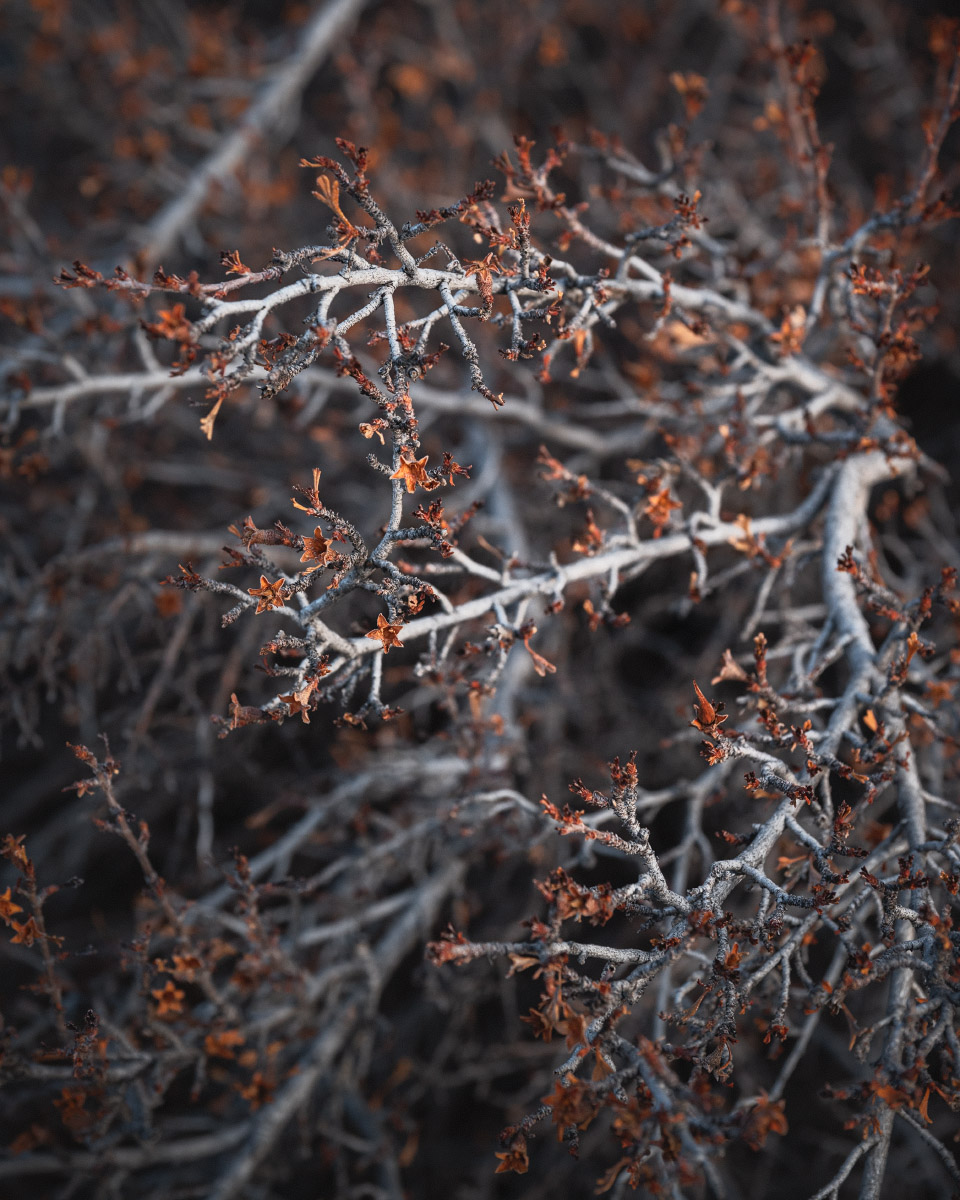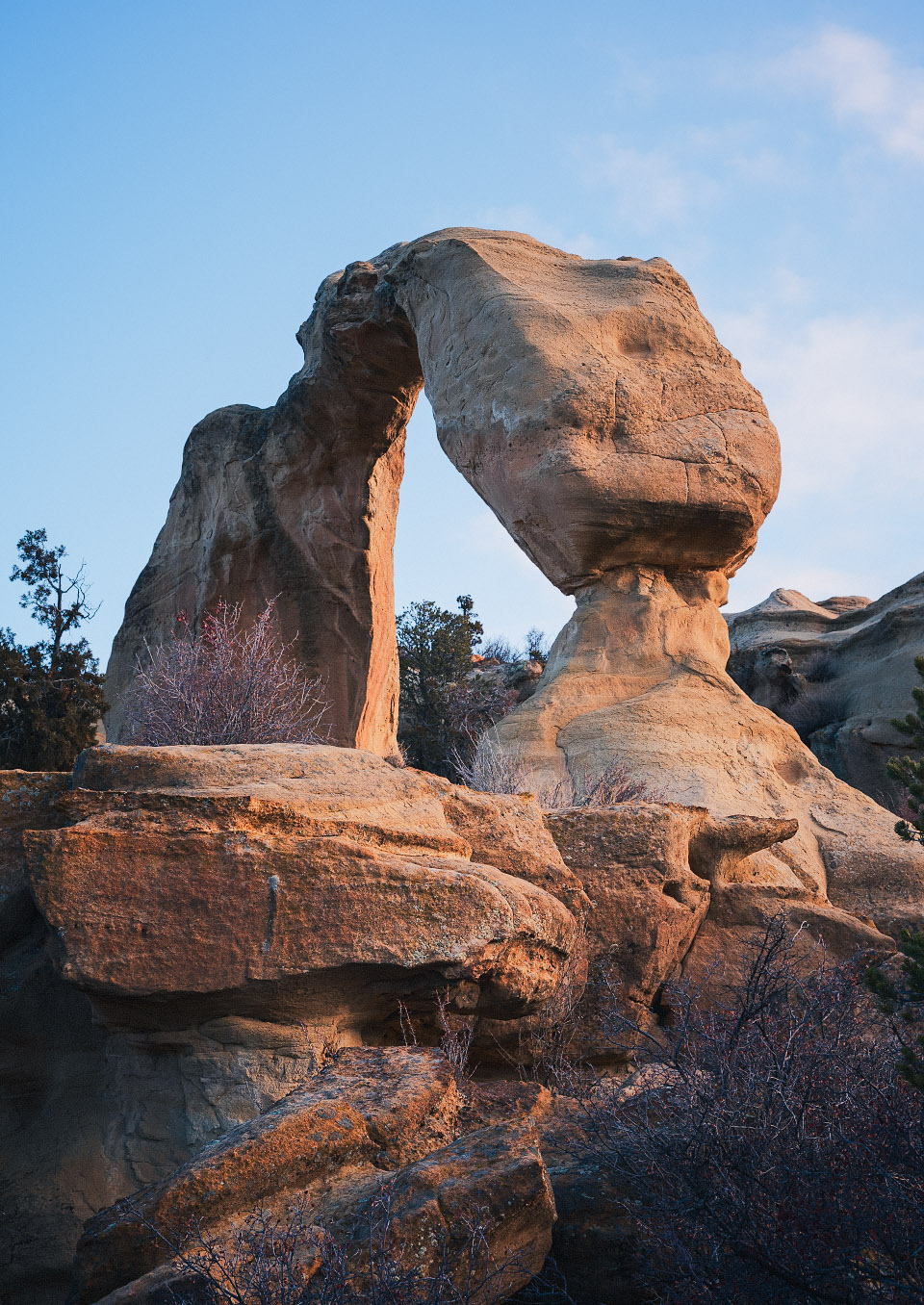Until two weeks ago, I had never heard of Cox Canyon. And I certainly had no idea there was an incredibly unique arch formation there known as the Anasazi Arch. So when a family member told me about it, and I looked it up, I knew that I had to plan a visit. It is called Anasazi Arch by many locals because indigenous artifacts were found in the area. But you will see it as Cox Canyon Arch on most maps.
Within two days of first hearing about it, I decided the late January weather was warm enough for a pre-dawn trip. My girlfriend Lisa was curious enough to agree to get up with me well before dawn and make the less than thirty-minute drive to the location. The road leading to it was a little rough in spots, but it was easy to get to.
Upon arriving at the parking area at the Cox Canyon Arch Primitive Campsite, there was a distinctive freestanding eighty-foot sandstone column with an interesting top. Even if we did not find the arch that day, I was excited to photograph such a cool geological feature.
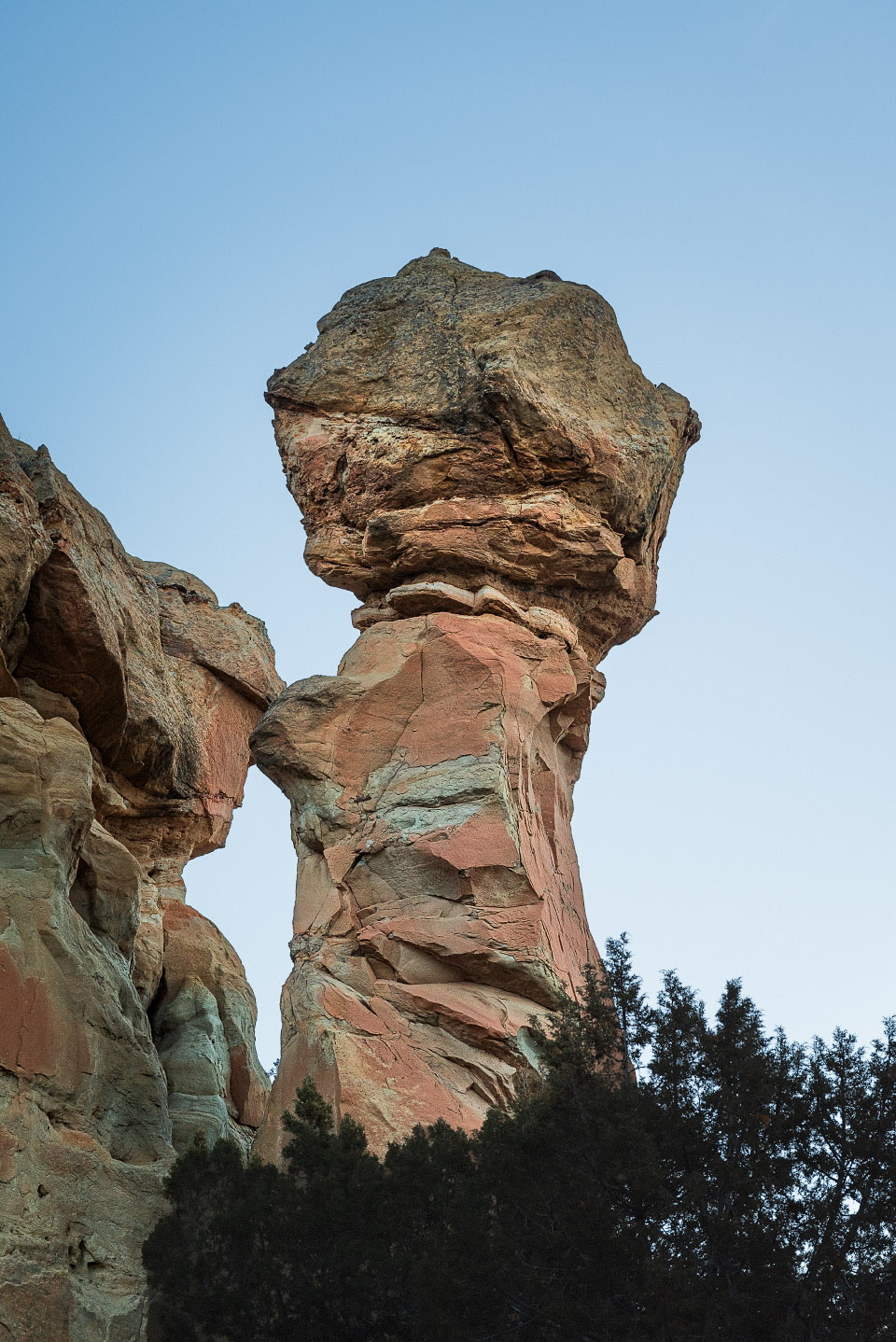
You cannot see Anasazi Arch from the road, so I relied on Gaia GPS to get us to the spot. Without it, we would not have found the path to get to it without climbing gear. One specific spot makes getting up the first sandstone terrace possible. After that, it is easygoing, with only one additional scramble at the arch's base.
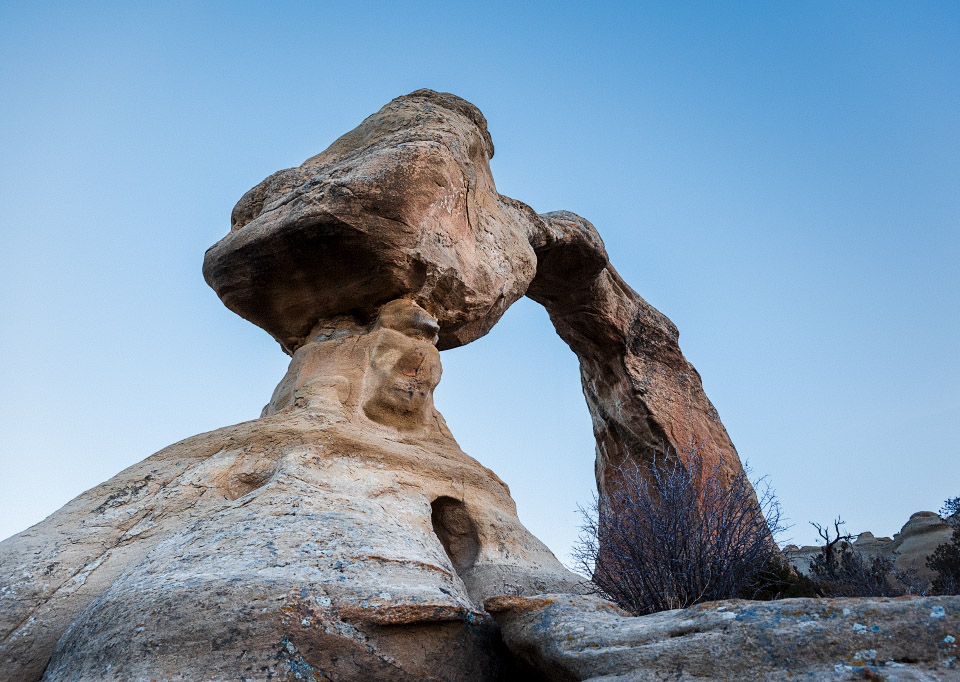
A Cooperative Moon
We arrived at the arch shortly after sunrise, but the sun was still behind the ridge that rose to our east. The light was subtle and almost perfect, though the fog I had hoped would be present after looking at the forecast the night before was settled dozens of miles to the east. Instead, the waning, almost full moon decided to be in the perfect location for my first shot of the full arch. A contrail further aided the shot by extending from the moon to the inner edge of the aperture.
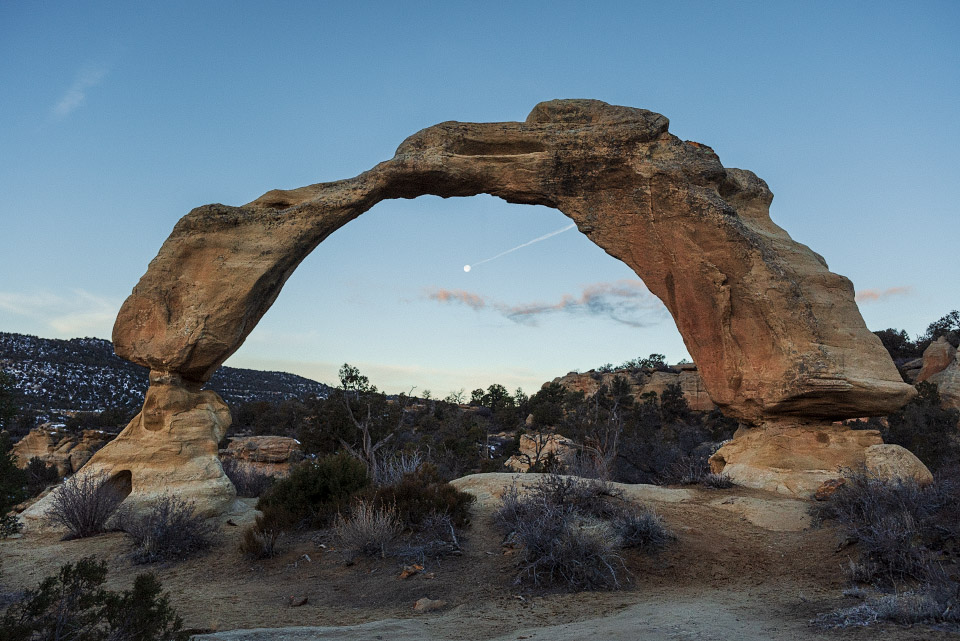

Finding Another Perspective
After getting some good shots on the same level as the arch, I began looking at the next sandstone terrace behind the arch. I wanted to be up there to look down, find a different perspective on the arch, and get an overview of the surrounding landscape. Lisa and I scoured the sandstone wall but could not easily identify a safe way to the top.
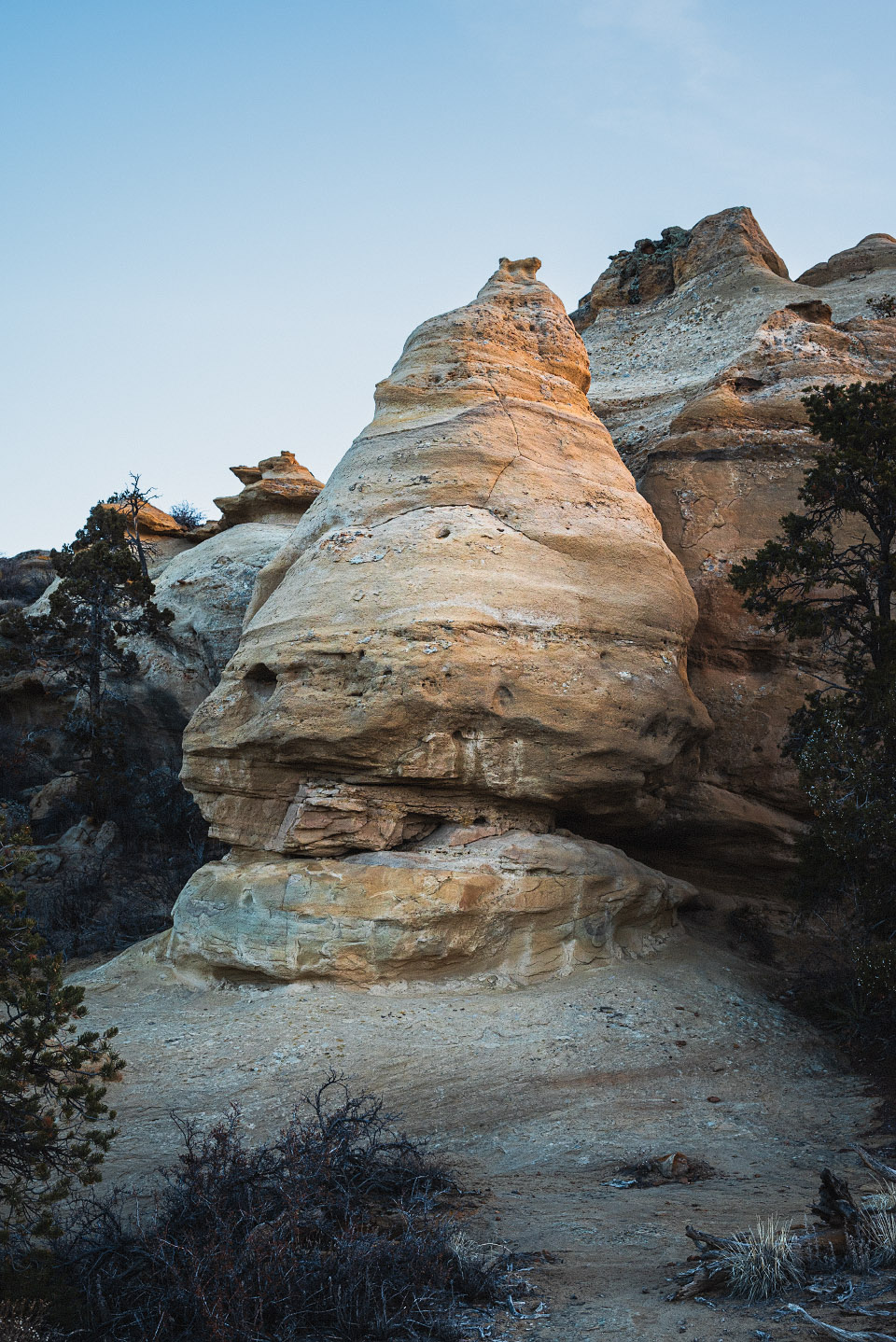
After trying a few different potential pathways that proved too steep for my comfort, I finally found a spot where I decided to attempt to climb. I later found out this route was called the Rabbit Hole. I carefully scaled the sandstone wall at this spot, making my way to the top without incident. The views I discovered from the top of the terrace were well worth the effort.

Exploring Up Top
I spent some time on the terrace. I explored the vistas of the arch and surrounding features. But I also wanted to discover details in the sandstone, formations that stood out, and other interesting small scenes that captured my attention. One particular formation reminded me of an alligator or prehistoric dinosaur with a bony head crest.
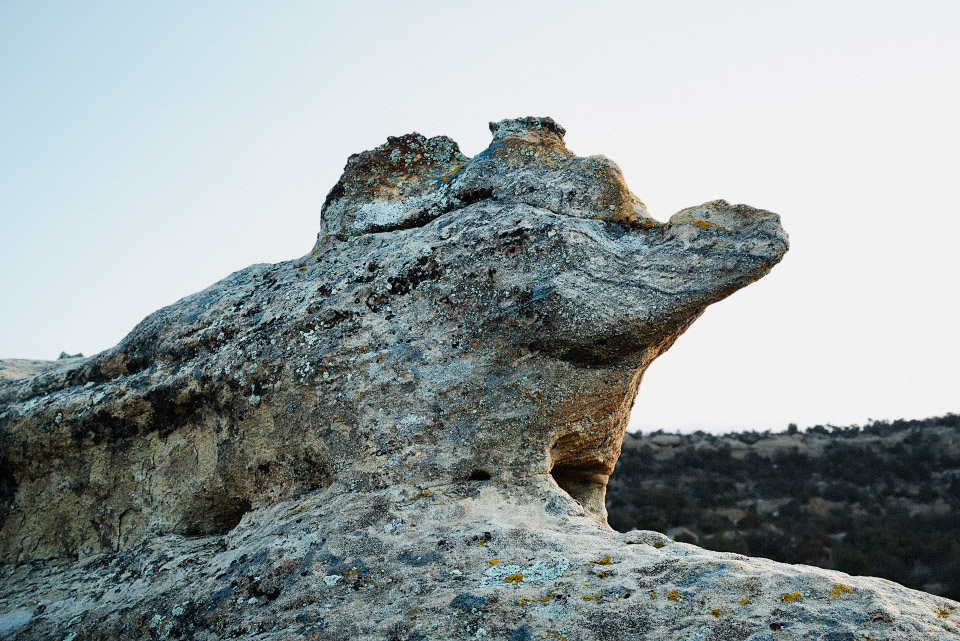
I continued looking for new angles from which to capture this gorgeous arch while the sun rose above the ridge. Waiting for just the perfect colors to hit the sandstone and make those warm colors pop. This was turning out much better than I expected for a last-minute trip.
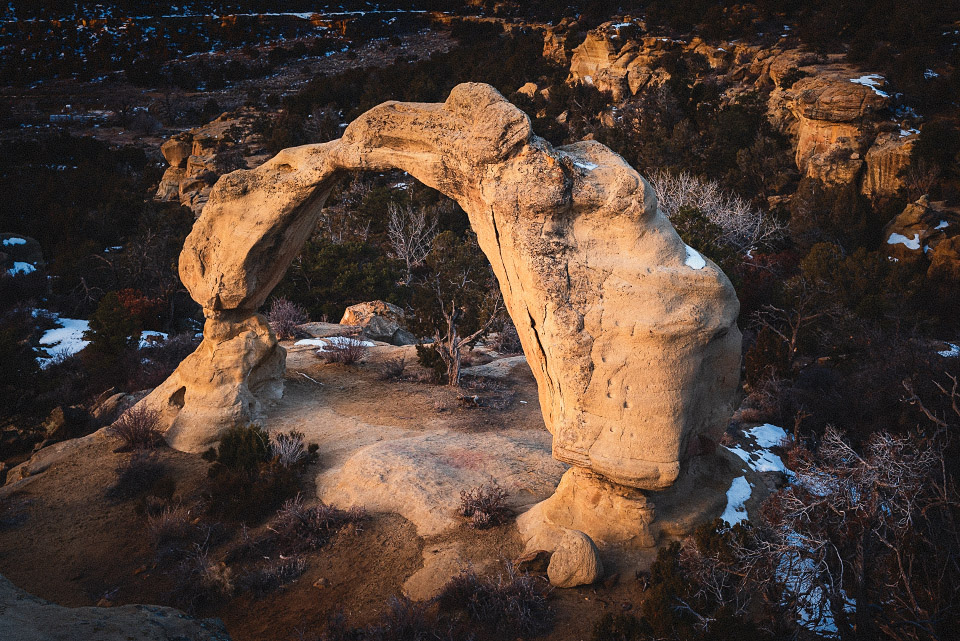
The Plucky Pine
After getting my fill of the arch from up top, I explored the upper terrace some more. And then I spotted this incredible little pine tree growing in a bowl of sandstone that was wonderfully highlighted by complimentary orange and teal tones. It was like finding a Bonsai tree in the wild, growing in the dirt and sand that had collected in this small depression.

Climbing Down
Coming down through the Rabbit Hole was a little more nerve-wracking than going up. But I managed slowly and carefully. The light started fading as the low clouds and fog that had been farther east started to block the sun. So we decided to make our way back down to the car. It was an enjoyable first visit and definitely will not be my last to this area full of geological wonders.
